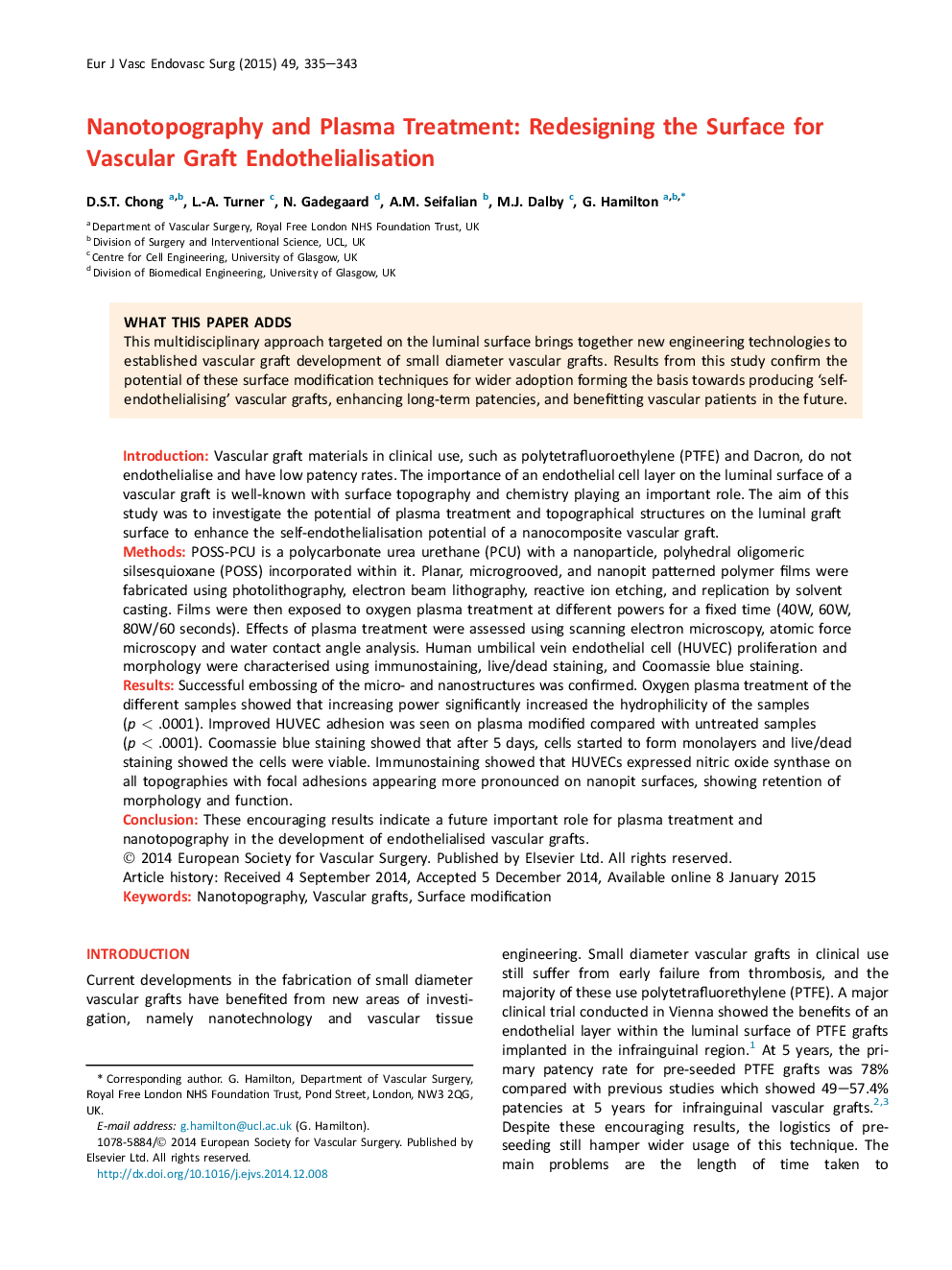| کد مقاله | کد نشریه | سال انتشار | مقاله انگلیسی | نسخه تمام متن |
|---|---|---|---|---|
| 5958108 | 1575444 | 2015 | 9 صفحه PDF | دانلود رایگان |
IntroductionVascular graft materials in clinical use, such as polytetrafluoroethylene (PTFE) and Dacron, do not endothelialise and have low patency rates. The importance of an endothelial cell layer on the luminal surface of a vascular graft is well-known with surface topography and chemistry playing an important role. The aim of this study was to investigate the potential of plasma treatment and topographical structures on the luminal graft surface to enhance the self-endothelialisation potential of a nanocomposite vascular graft.MethodsPOSS-PCU is a polycarbonate urea urethane (PCU) with a nanoparticle, polyhedral oligomeric silsesquioxane (POSS) incorporated within it. Planar, microgrooved, and nanopit patterned polymer films were fabricated using photolithography, electron beam lithography, reactive ion etching, and replication by solvent casting. Films were then exposed to oxygen plasma treatment at different powers for a fixed time (40W, 60W, 80W/60 seconds). Effects of plasma treatment were assessed using scanning electron microscopy, atomic force microscopy and water contact angle analysis. Human umbilical vein endothelial cell (HUVEC) proliferation and morphology were characterised using immunostaining, live/dead staining, and Coomassie blue staining.ResultsSuccessful embossing of the micro- and nanostructures was confirmed. Oxygen plasma treatment of the different samples showed that increasing power significantly increased the hydrophilicity of the samples (p < .0001). Improved HUVEC adhesion was seen on plasma modified compared with untreated samples (p < .0001). Coomassie blue staining showed that after 5 days, cells started to form monolayers and live/dead staining showed the cells were viable. Immunostaining showed that HUVECs expressed nitric oxide synthase on all topographies with focal adhesions appearing more pronounced on nanopit surfaces, showing retention of morphology and function.ConclusionThese encouraging results indicate a future important role for plasma treatment and nanotopography in the development of endothelialised vascular grafts.
Journal: European Journal of Vascular and Endovascular Surgery - Volume 49, Issue 3, March 2015, Pages 335-343
